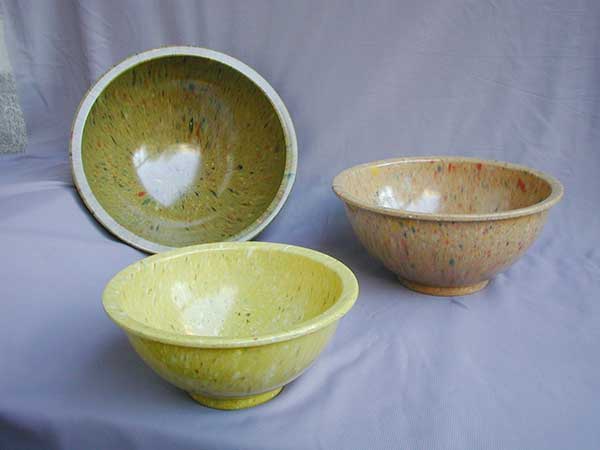Melamine: a classic among plastics
Melamine replaced Bakelite and urea resin because it was stronger and more suitable for dishware. Notably it had no effect on food items. The newly discovered melamine was used for the first time on a large scale in World War II for radar components and grenades. After the war it became immensely popular in households in the United States: melamine tableware was break resistant, colored, light and easy to clean.
Texasware
In America Texasware, Melmac and Boonton were literally household words. In the late fifties half of all crockery sold in the United States was made of melamine, often designed by well-known designers like Russel Wright.
Incidentally, melamine is still present everywhere in homes in materials such as laminate flooring, counter tops, kitchen cabinets and bookshelves. DSM Limburg is the worldwide leader for the raw material of melamine.
Carnaby colors orange, brown, green
In the Netherlands this tableware was especially popular on campsites, but many children’s plates are also made of this plastic. As it is still used a lot in Asia you still see it in many Cinnese-Indonesial restaurants. The most well known Dutch brand Mepal is still being sold. In the Netherlands it was especially popular in the mid-sixties and presented in the so-called Carnaby colors: orange, brown, red and green in the kitchens.
KLM-servies
KLM airline melamine tableware is a classic, designed by the famous glass artist Copier in 1948 which many passengers from that time took home after the flight (a suggestion of KLM!). The PolyPlasticum has some of the molds that this dishware was produced with.
Donation Pieke Hoogenhoff
The PolyPlasticum is the proud owner of a large collection of melamine tableware thanks to a donation from Pieke Hoogenhoff in late 2014. Hoogenhoff published extensively about the history of the Dutch plastics industry. Besides its collection of melamine tableware Hoogenhoff donated 30 books on plastic.












